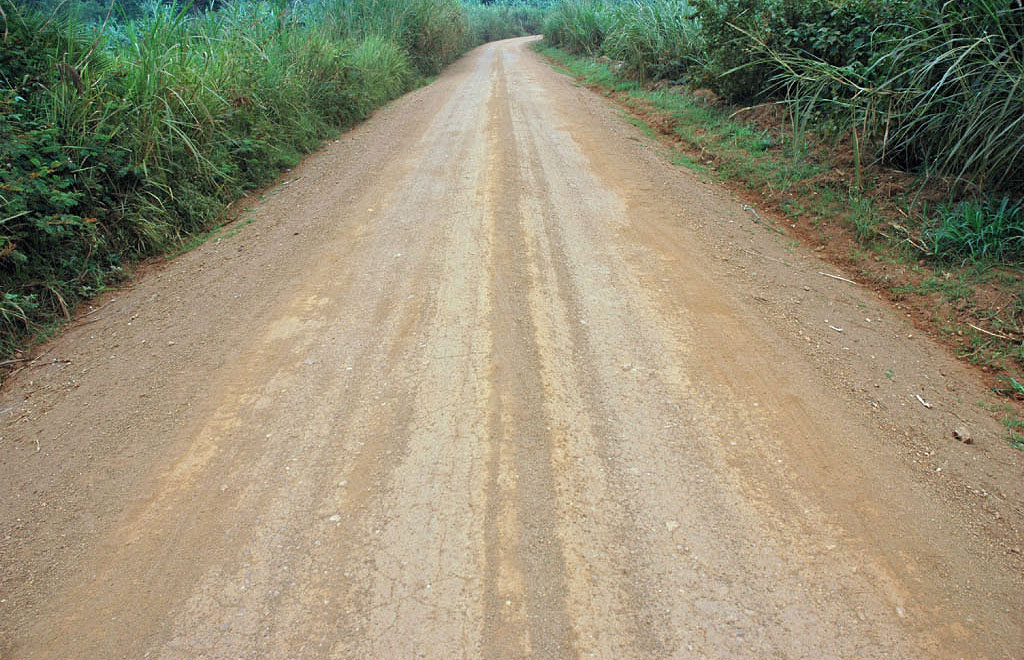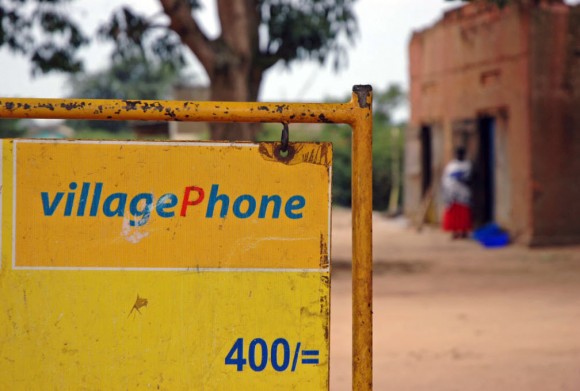Drive due south out of Kampala and in 70 kilometers or so you’ll arrive at the town of Kyotera, our research base for the next few days. Continue straight on from there and you’ll soon hit the Uganda – Tanzania border, head east and you’re in rural backwaters, head west and you’ll need a boat to take you across Lake Victoria. Kyotera is in a good location to research, well, whatever it is that we’re here researching and the bonus is that our hotel can offer cold beer despite frequent power cuts.
This morning the research team rose sufficiently early to drive onto Kansensero – a fishing village on the edge of Lake Victoria. We time our departure to arrive with the boats ashore and the last of the catches being weighed and sold. The journey was pretty uneventful save for a herd of long horned bulls (yes they do have exceptionally long horns) and a quick stop at a village phone operator. Grameen Foundation USA is working in partnership with local micro-finance organisations, the regional carrier MTN and my employer to provide Village Phone kits – essentially an adapted mobile phone, an antenna with a long cable and a car battery to keep it charged. (Car batteries are a common source of power in rural Uganda). Through micro-finance lending the village phone operator can borrow enough money to buy the operator kit and for many it becomes a profitable business.
Driving along the back country roads of Rakai district there are two obvious ways to tell that Village Phone operator is offering connectivity: from a distance you can spot the antenna topped pole rising up to 4 times the height of other structures in the village (glimpsed through the tree foliage in the photo above); and on entering a village the yellow MTN sign advertising call rates looms into view. The affect of easier access to affordable connectivity on the prosperity of the village inhabitants is an worthy topic of research, but requires more time than we have today.
Kansensero has irregular GSM coverage and no mains electricity – power comes in the form of a generator or more commonly car batteries. It’s interesting to understand the strategies residents adopt to make the most of what is available, but I’m also aware there are broader issues at play such as access to water (mostly it is delivered on bicycle in jerry cans) and basic healthcare. In many respects the frontier of the future perfect is not what’s possible in Tokyo, Paris or London but in villages such as this – in providing access to base necessities. Time and again interview subjects bring up the topic of calling hosptials, midwives and sick relatives, or to report the death of a family member.
Despite the availability of fresh fish our local guide advises us to avoid the local menu – cholera is a factor and he can’t vouch for the cooking conditions. So we pile in the car and drive up to a loading bay on the Kagera River and munch our way through a packet of digestives and segments of processed cheese. Our driver requests a photo of himself to show his family he has indeed been here on Uganda’s southern border, and as I snap away one of our team conducts an ad-hoc interview. The interviewee, a policeman is chatty and his positive demeanour is set off by some pristine white rubber boots – more commonly found on the feet of local fishermen than on the police. He stands on a pile of wood, Kalashnikov in hand overseeing the unloading of a consignment of coffee beans from Tanzania and as the interview progresses we watch labourers lugging 60kg sacks to a nearby truck. This isn’t an official border crossing and if tax is normally charged it’s not being levied here.
Its hard to turn away from a border without crossing, but that’s a journey for another day.

